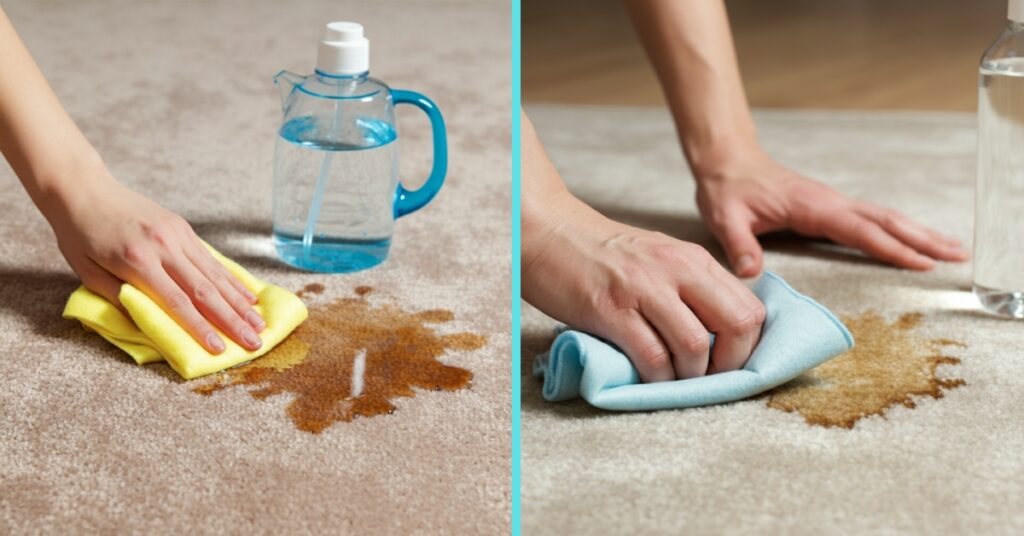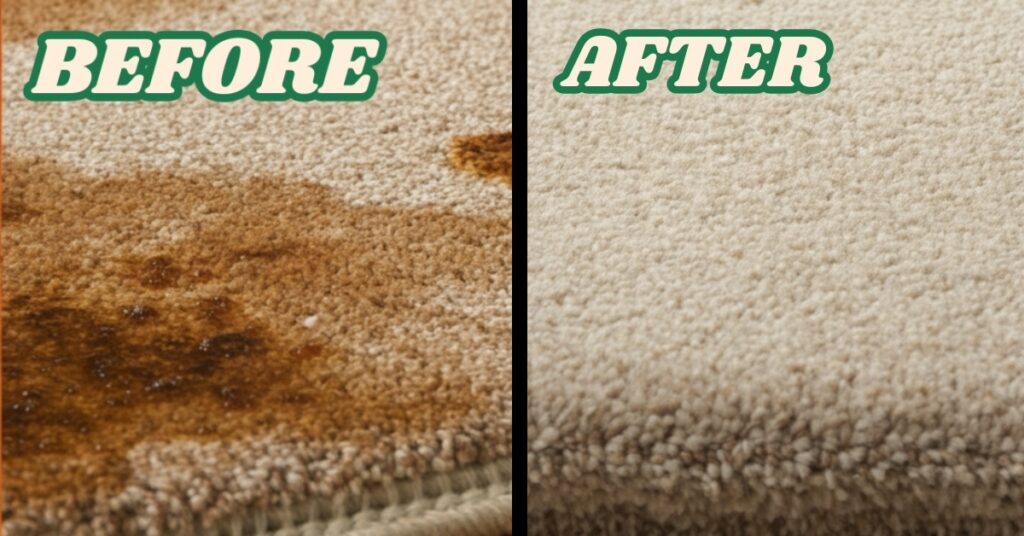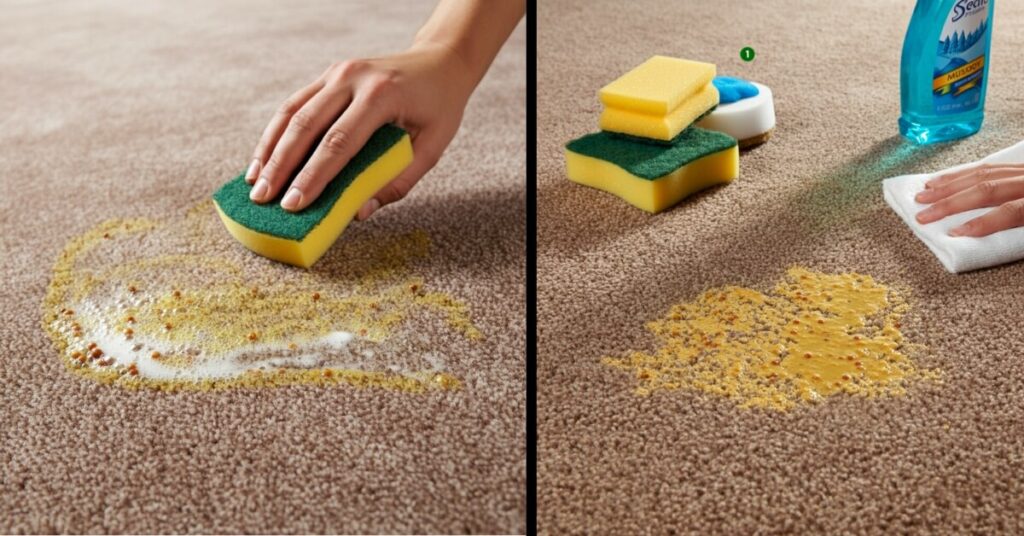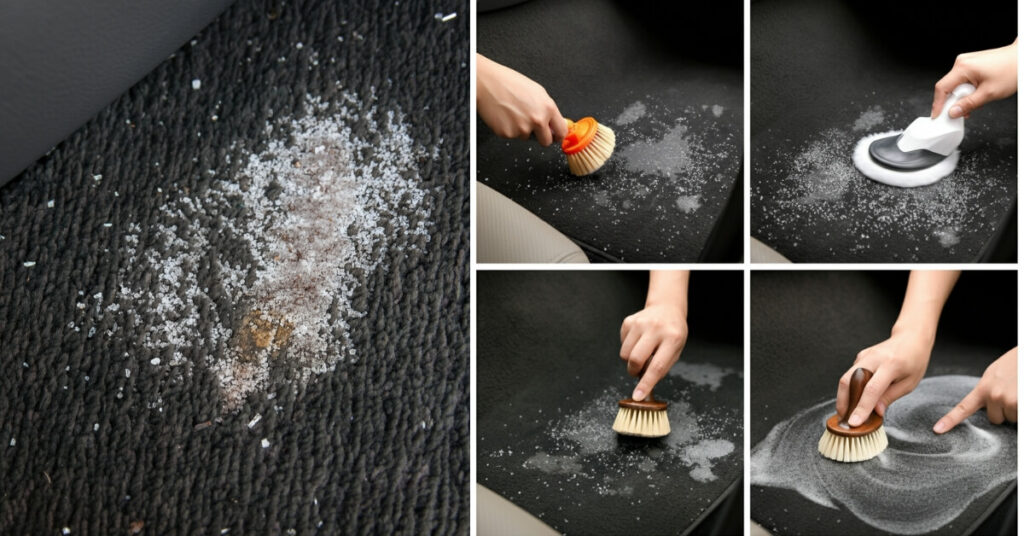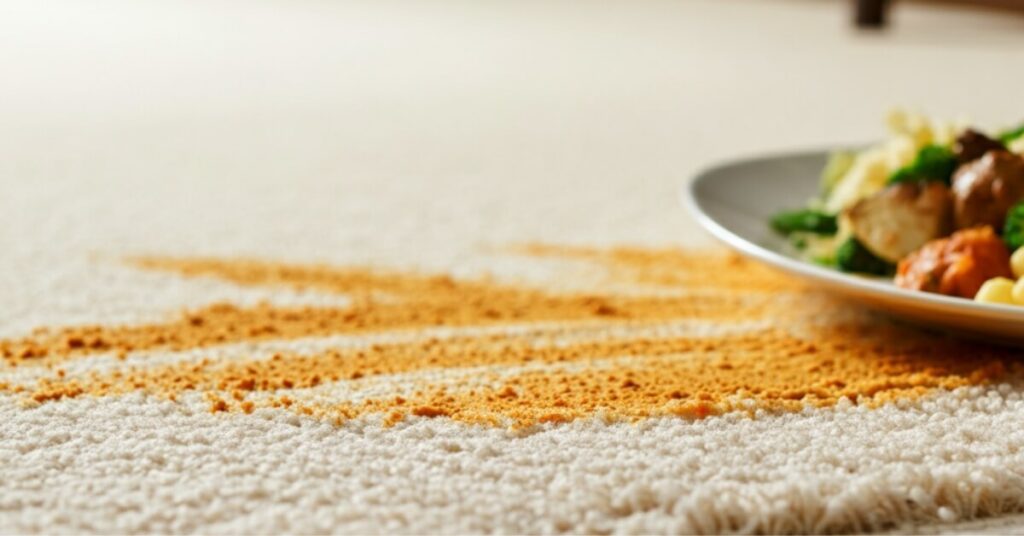As an Amazon Associate, I earn from qualifying purchases.
Yes, tea stains on carpet can be removed effectively with the right approach. If you’re wondering how to remove tea stain from carpet, this guide provides clear, actionable steps using simple tools and household solutions. Tea contains tannins that quickly seep into carpet fibers, making the stains difficult to eliminate if not treated immediately.
However, there’s no need to panic or hire costly professional cleaners. With prompt attention and the correct techniques, even deep-set stains can be lifted successfully. This article explains how to treat fresh and dried tea stains, offering proven methods for restoring your carpet. Whether you’ve spilled green tea, black tea, or herbal blends, you’ll learn practical ways to clean up the mess without damaging your flooring.
Contents Overview
What Makes Tea Stain So Difficult to Remove?
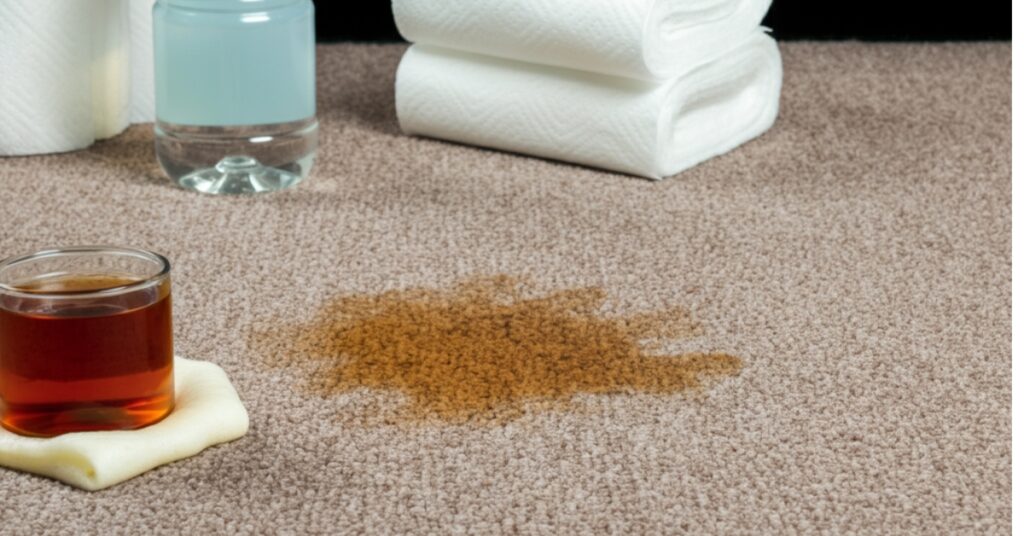
Before we start the cleaning process, It’s important to know the odds that you are up against. Looking closer, tea stains are more decepting than we would think they are. A much clearer tea staining rug is more complex than one would assume (and clearly looks).
Tea’s unique flavor profile distinguishes itself among beverages, offering diverse toxins coming from various chemical sources. Rather unique in flavor, tea also does inherit a color to go along with it, and thus, its color, pale yellow, is a result of a blend of coffee with tannins.This is not the only drawback since tannins do act as a dye, thus allowing for easy removal of stains, leaving porous material intertwined with precious crustacean fibers.
Carpet’s Absorbent Structure
Most carpets are made from synthetic, wool, or blended fibers, which tend to be highly absorbent. This means a tea spill will often be absorbed quickly, sometimes seeping deep into the lower layers. Once tannins infuse, they begin chemically bonding to the fibers, which adds to the challenge.
The Race Against Time
Tea stains are time-sensitive. As time progresses, it becomes increasingly difficult to remove tea from the carpet. As time elapses, the stain will also intensify, becoming more permanent and requiring a prompt response to achieve optimal results. In some situations, how quickly you respond can mean the difference between a permanently stained carpet and one that is pristine.
How To Remove Tea Stain From Carpet (Step-by-Step Guide)
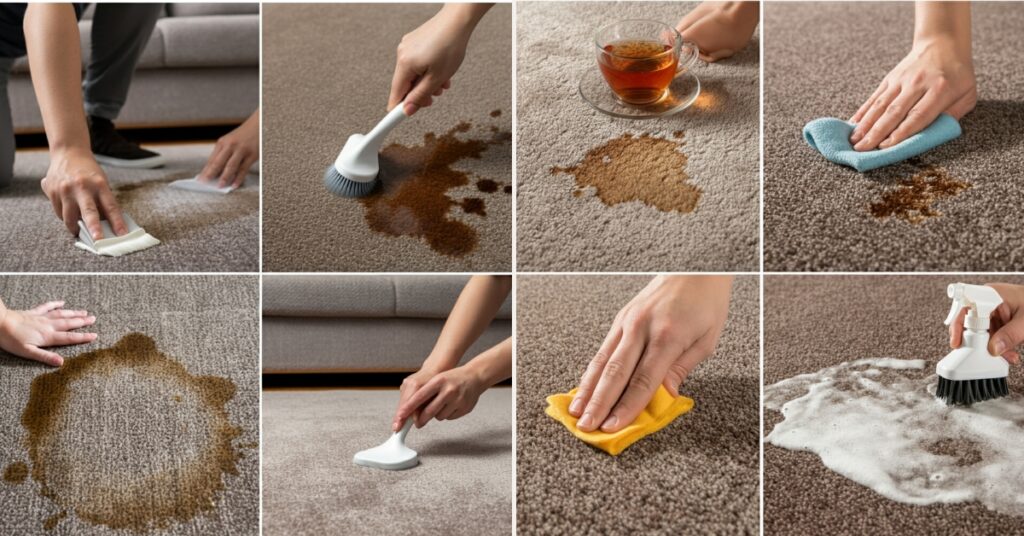
In this case, the recipe for success begins with speed and accuracy. Here’s a guide to effectively remove tea stains from carpets using everyday items; executing the steps is what really matters.
Step 1: Immediate Action – Blot, Do Not Rub
Responding quickly makes all the difference. As soon as you notice the spill, get a clean white cloth or paper towel. Use it to blot out the stain. Do not rub, even though it is a natural reaction; this will push the stain deeper and spread it further.
Cleaning tip: Use a white towel or paper towel to avoid transferring dye to your carpet.
Step 2: Pour Cold Water on the Stain
After thoroughly blotting, pour or spray water on the stain. Cold water helps lift tea stains from fibers and dilutes the tannins prior to setting. Blot with a dry towel afterward. Keep doing this until no color transfers onto your cloth.
Step 3: Treat with Your Cleaning Solution
Now you can treat the stain with your selected cleaning solution. Apply it generously to the stained area with a clean sponge or spray bottle. Allow the solution to soak for a few minutes, allowing it to tackle the tannins.
Step 4: Blot and Rinse
Use a clean towel to gently blot the treated area, removing the solution and any remaining stain particles. Rinse with cold water until no more cleaning product residue remains, then blot until your carpet is damp.
Step 5: Drying
Use a clean, dry towel to blot the area and remove excess moisture. To speed up the drying process, you can use a small fan or open windows to increase airflow. Do not walk in the area until it is scorched. By following these easy instructions, you will have a better chance of removing the tea stain fully and as quickly as possible.
Best Cleaning Solutions for Tea Stains
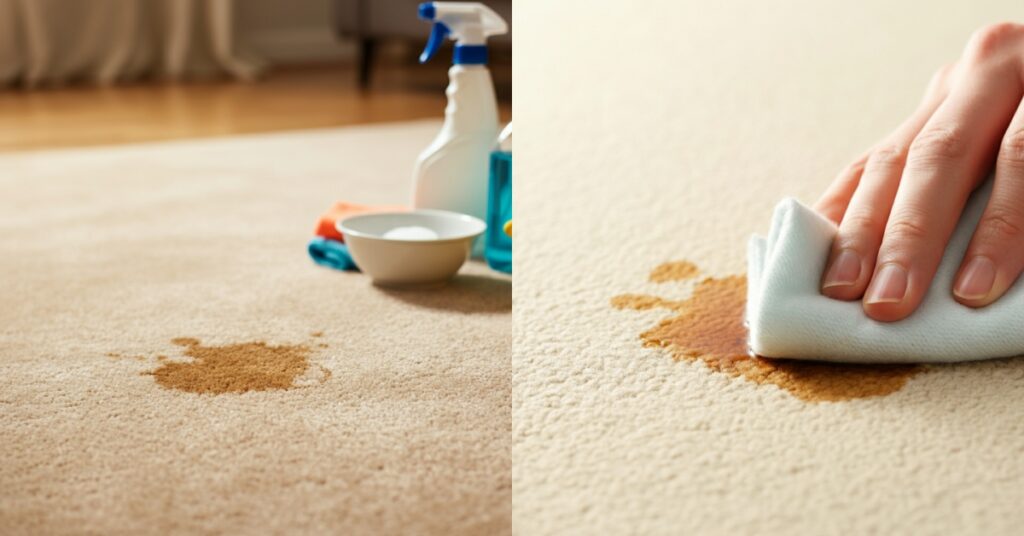
You do not have to spend money on expensive products with harsh chemicals. Usually, common tea stains can be treated with simple household items. Here are some effective tea stain cleaning methods.
1. Vinegar and Baking Soda
This method is popular for its natural stain removal properties, and applies the fizzing action and fighting power of common kitchen items.
Procedure:
- Sprinkle baking soda liberally over the stained area.
- In a spray bottle, combine equal portions of white vinegar and cold water.
- Spray the mixture over the baking soda and leave for a few minutes until the fizzing stops.
- Gently blot with a clean towel before rinsing the area with cold water and blotting again.
This approach is particularly effective for light stains and recently set stains.
2. Dish Soap and Hydrogen Peroxide
Another powerful tool to clean tea stains more effectively.
Follow these steps:
- Combine 1 teaspoon of unscented, clear dish soap with 2 cups of hydrogen peroxide in a small bowl.
- Using a cloth or sponge, apply the mixture to the stain.
- Wait 5-10 minutes before proceeding.
- Blot, rinse with cold water, and pat dry.
Note: Always do a patch test with hydrogen peroxide on hidden parts of the carpet, as it can bleach certain fabrics.
3. Commercial Carpet Stain Removers
If you like using products straight off the shelf, there are many carpet stain removers, specifically designed for tannin (tea, wine, coffee) stains. Look for labels that say “tannin stain remover” or “tea/coffee carpet cleaner.”
How to use: These products come with instructions that typically include spraying, waiting, blotting, rinsing, and dying the area.
4. Natural Enzyme Cleaners
For organic stains, enzyme-based cleaners do the trick. They break down proteins and other complex molecules from spills like tea.
How to use:
- Spray or pour the cleaner on the impacted area.
- Allow the product to work for 15-20 minutes before returning to the area to wipe off excess.
- Blot with a towel and rinse well with water.
Enzyme cleaners work well for homes with children and pets since they are safe for use but strong enough to work.
Tips to Prevent Making Stains Worse
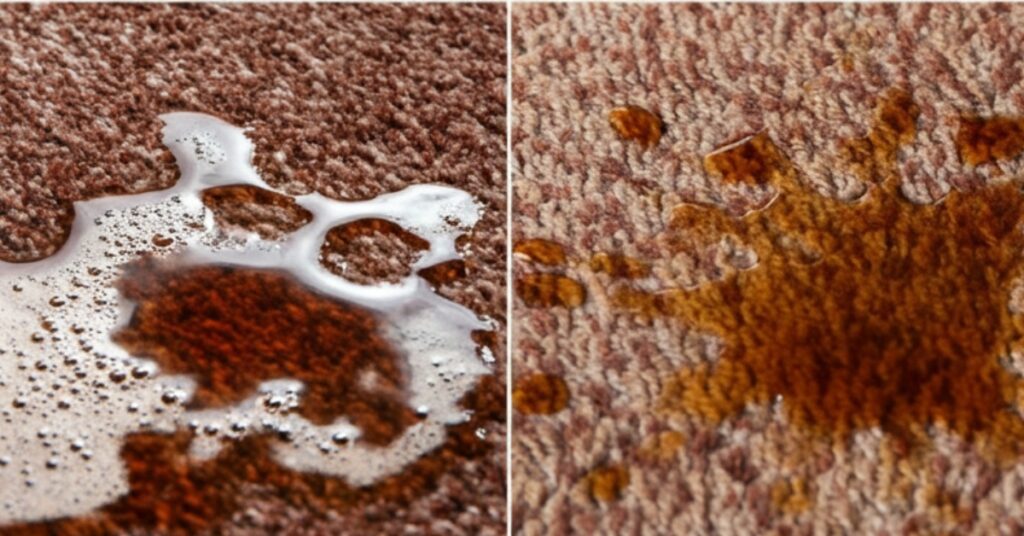
Regardless of how good a cleaning product may be, it can be undone by poor or rushed technique. Here’s how to avoid ruining things:
- Blot ‒ Never Scrub: Forcing a stain deeper into the carpet fiber by scrubbing will also twist the pile, adding twists and permanent marks on the carpet. Always blot gently and repeatedly.
- Don’t Use Hot Water: To set tea stains, the tannins need to be heated, so use cold or lukewarm water only.
- Always Performing Patch Tests: If your carpet is made of wool or silk or has vibrant colors, test every cleaning solution on a small, inconspicuous patch first.
- Take Action Quickly: Stains that are treated quickly stand a better chance of being fully removed.
- Keep White Vinegar, Baking Soda, Mild Dish Soap, and Towels: Supply Accidents occur in a matter of seconds which is why every household should always keep the supplied ready.
Conclusion
There is no need to panic or lose hope every time tea spills, especially when you have the understanding and the right techniques to handle stubborn marks. You can try natural DIY methods like baking soda and vinegar, or more commercial-grade removers and enzyme solutions to fully equip yourself for the battle against unruly tea stains.
Once the cleaning is done, knowing how to dry carpet after cleaning ensures your floors remain fresh and free from moisture-related damage. Your floors will remain beautiful and inviting for years to come with these expert, actionable strategies that can be implemented right away. Enjoy your tea or coffee break without worrying about spills being evident on your carpet!
FAQs
1. Is it possible to remove old tea stains from carpets?
Yes, it is. While old tea stains can be hard to remove, they can be conquered. The stain can be rehydrated using cold water and white vinegar, then soaking for several minutes before repeating the process. This is especially true for stains that have set in over weeks or months. Trying several times most often does actually work.
2. Can vinegar discolor my carpet?
Most carpets can tolerate diluted vinegar, especially when used with cold water. Still, it is good practice to do a patch test. Some carpets, like antique wool, are vibrant or delicate and may not respond kindly. When in doubt, checking the care instructions for the carpet or consulting a professional is a safer bet.
3. Can I use bleach on tea stains?
It’s best to steer clear of bleach for tea stains. Bleach can damage carpet fibers, cause yellowing, or create lighter patches, especially on colored or patterned carpets. Safer alternatives include hydrogen peroxide (after testing) or commercial carpet stain removers designed for tannin stains.
4. What if the carpet still smells after cleaning?
Sometimes, residual odors linger even after a stain fades. Here’s what you can do:
- Sprinkle baking soda generously over the affected area.
- Let it sit “overnight,” allowing the baking soda to absorb any odor.
- Vacuum thoroughly the next day.
Baking soda is a natural deodorizer and should leave your carpet smelling fresh. Airing out the room or placing a fan near the spot also speeds up odor removal.
5. Are professional cleaners better for tea stains?
Professional carpet cleaners have access to powerful equipment and advanced cleaning solutions that can treat even the oldest or most challenging stains. If home remedies fail after several tries, or if your carpet is high-value or delicate, it might be worth investing in a professional service for peace of mind and a like-new appearance.
As an Amazon Associate, I earn from qualifying purchases.
